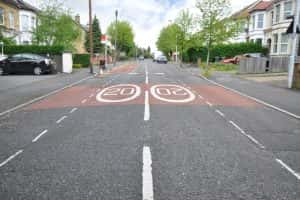 When using the roads, it is important that you are aware of the rules to obey, and with the number of road users continuing to rise, some of us may need a brief refresher on the Highway Code. With a variety of signs to be clued up on, pedestrian crossings to be aware of and speed, as well as weight, limits to look out for, there is a hefty amount of information that you need to be confident in knowing. We have created a simple guide of what to look out for whilst out on the roads.
When using the roads, it is important that you are aware of the rules to obey, and with the number of road users continuing to rise, some of us may need a brief refresher on the Highway Code. With a variety of signs to be clued up on, pedestrian crossings to be aware of and speed, as well as weight, limits to look out for, there is a hefty amount of information that you need to be confident in knowing. We have created a simple guide of what to look out for whilst out on the roads.
Speed Limits
When it comes to speed limits, we are expected to know how fast to travel even when there are no visible signs. Taking in your surroundings and assessing the area that you are driving through will allow you to place an accurate estimate on the speed limit required.
- In built-up areas – signaled by a row of lampposts along the pavements – the speed limit is 30mph. Remember, this is the limit, not goal, so be sure not to exceed. If the speed limit differs to the national expectation, there will be a sign that clearly states the new restriction. For example, if you are approaching a school or row of shops, the limit will most likely drop to 20mph, or lower.
- Dual carriageways can be identified by a central reservation in the centre of the road, in the form of a metal barrier or a small grass verge, splitting apart the cars driving in opposite directions. The national speed limit here would be 70mph for cars but 60mph for heavier vehicles, such as those towing a trailer.
- Motorways consist of the same speed limit as a dual carriageway but are identified by three or four lanes each side of the central reservation. Statistically, these are the safest roads to travel on due to everyone moving in the same direction at a similar speed. This is when it is important to follow the speed limit. Although they are limits and not goals, it is important that you aren’t travelling too slow, particularly in the overtaking lanes, as this would be hazardous to other drivers.
Weight Limits
The weight of a vehicle can impact other drivers as well as locals. The heavier the vehicle, the slower it will be able to move, often holding up a row of traffic or congesting rural and suburban areas. Where possible, any Heavy Goods Vehicles (HGV’s) over 7.5t should be restricted to the use of only A and B roads. However, this is not an official law, and HGV’s are able to use other options to create a shortcut between their destinations.
Other signs
Signs in a blue circle will be mandatory instructions. Examples of this are
- A ‘turn left’ sign, asking you to follow the rules and do not turn right.
- ‘Bicycles only’ signifies that only cycles are able to use a certain part of the road.
Signs in red circles inform you of what not to do. Examples of these are:
- Speed limit signs, instructing you to not exceed the limit set.
- Weight limits, instructing that vehicles above the limit take an alternate route and do not use the road ahead.
Triangular signs are used for warnings. Examples of these are:
- Hump bridge – Often seen on rural roads, these may come with a listed maximum weight limit that the bridge can hold and often, an alternative route may be required depending on the size of your vehicle.
- Double bend – would mean you need to decrease your speed to cope with the two back-to-back bends.
Height restrictions
Large vehicles, such as lorries, removal trucks or tall vans are at risk of striking bridges when passing underneath, so it is important not to ignore the height warning sign. Keep a look out for these if you are driving down a rural road or approaching a train station, as this is where they are most commonly found. By looking out for the warning signs and avoiding these roads, you can save costs of repair to the bridge and repair to your vehicle.
When entering car parks, there are often height restrictions that you must comply to before entering. If you are driving a car with a top box or roof rack, you may need to dismantle this before entering. Often, vans and larger vehicles will not fit within these car parks and may have to find, either, a different area to park or use a designated loading bay if you are unloading your vehicle.
Width restrictions
We often approach those nasty width barriers with gritted teeth, in hope that we don’t take a nasty dent or scratch to the door of our vehicle. The main use for these restrictors is to ensure that vehicles over certain size don’t use these roads as their shortcut. Often found by schools, train stations with low bridges or at the entrance to narrower country lanes, these are used to deter oversized vehicles from congesting particular areas. There will be circular warning signs on the run up to these width barriers to ensure that you don’t, quite literally, get stuck!
It is worth remembering that whether you are driving your own, or a rented car, van or lorry, that you will be responsible for any damage that occurs or driving penalties incurred. Before your journey, have a look at a map of the route you plan to take, and always remain aware of road signs and speed limits to ensure that you comply with the rules of the road.
If you are in need of a van, give our friendly Pace Van Hire team a call on 020 7277 9853 or 07841 77 77 17 or drop us an email at info@pacevanhire.com where we will be happy to help!




